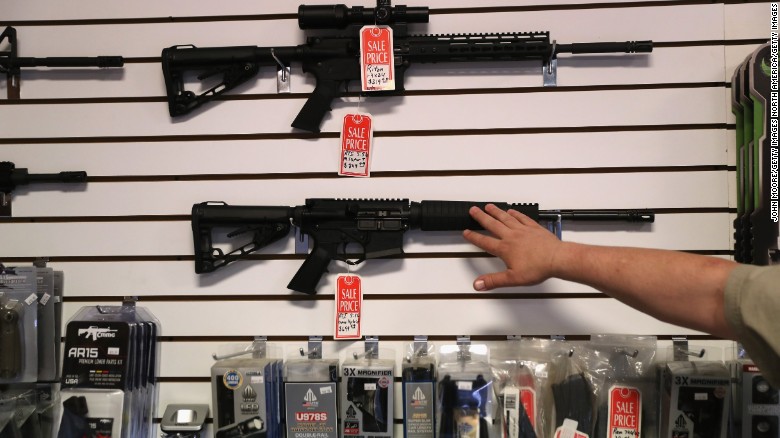Story highlights
- Bump-fire stocks are not illegal, ATF says
- The device was originally created to help people with disabilities use rifles
(CNN)The gunman in the Las Vegas massacre may have rigged his guns with devices that enable a shooter to fire bullets rapidly, mimicking automatic fire.
Twelve bump-fire stocks were found on firearms recovered from Stephen Paddock's hotel room, said Jill Snyder, the special agent in charge of the Bureau of Alcohol, Tobacco, Firearms and Explosives' San Francisco field office.
Also known by the brand name Slide Fire, bump-fire stocks, or "bump stocks," modify such rifles as an AR-15 to "allow it to fire in rapid succession or automatic fire," said Sam Rabadi, a retired ATF special agent.
How do they work?
The difference between semi-automatic weapons and automatic weapons is what happens when you pull the trigger.
On semi-automatic weapons, the trigger must be pulled every time to fire a round, after which the weapon reloads itself. On automatic weapons, once the trigger is pulled and held, the weapon will continue firing until the ammunition is expended or the trigger is released.
Bump-fire stocks are attached to the receiver of the rifle. The stock uses the recoil effect to bounce the rifle off the shooter's shoulder and "bump" the trigger back into the trigger finger, thereby firing the weapon repeatedly.
These devices can be purchased online or from a manufacturer, and prices can range from $50 to several hundred dollars each.
"You really don't have to be a professional armorer to do it," said James Gagliano, a retired FBI supervisory special agent and CNN law enforcement analyst.
In 2010, Texas-based Slide Fire pitched the device to federal regulators as a new way to assist people with disabilities to "bump fire" an AR-15 type rifle.
"Individuals that suffer from severe arthritis, partial paralysis, or other conditions that affect their ability to traditionally operate a firearm can now utilize the SSAR-15 and the muscular strength in their entire arm to active the firing mechanism," the manufacturer said on its website.
Are they legal?
While automatic weapons are tightly regulated in the US, the use of bump-fire stocks in semi-automatic weapons is legal.
Bump-fire stocks allow semi-automatic weapons to simulate automatic fire but "do not actually alter the firearm to fire automatically, making them legal under current federal law," Snyder said.
But some believe bump-fire stocks, while legal, violate the spirit of gun restrictions.
"This is something that works around and circumvents our laws," Gagliano told CNN's Chris Cuomo on "New Day." "You're not mechanically modifying a weapon, but you're putting an aftermarket product on that allows you to lay down ... suppressive fire."
Could the law change?
The revelation that Paddock's weapons had such devices attached has caught the attention of some lawmakers.
"That is just a huge loophole that allows you to convert a weapon into something that is like an automatic gun," Rep. Dina Titus, a Nevada Democrat, told CNN.
Titus is among several members of Congress who want to restrict bump-fire stocks.
Sen. Dianne Feinstein, D-California, introduced legislation Wednesday that would ban manufacturing or procession of accessories that accelerate a semi-automatic rifle's rate of fire to that of an automatic weapon.
"Why can't we stop this?" Feinstein said. "Why can't we keep a weapon from becoming a military battlefield weapon?"
Twenty-six of her Democratic colleagues are on board, but the measure has no formal Republican support. Several senators said Wednesday they were unfamiliar with what bump stocks are and needed to look into them before weighing in on the legislation.
"We'll get hold of some folks in the industry and find out what they do and we'll look at Dianne's bill and make a decision in due time," said Sen. Jon Tester, D-Montana.
Sen. Bob Corker, R-Tennessee, said he couldn't respond to the legislation until his staffers could show him how the devices work and "how that affects law."
The purchase of fully automatic weapons has been restricted in the US since the 1930s.
But bump-fire stocks didn't exist when the National Firearms Act was enacted in 1934 or when the law was amended in 1986 to prohibit the transfer or possession of machine guns by civilians.
"As technology has come through in the last number of years I believe the original authors of the act probably did not envision this kind of accessory being used for modifications of this sort," Rabadi said.






